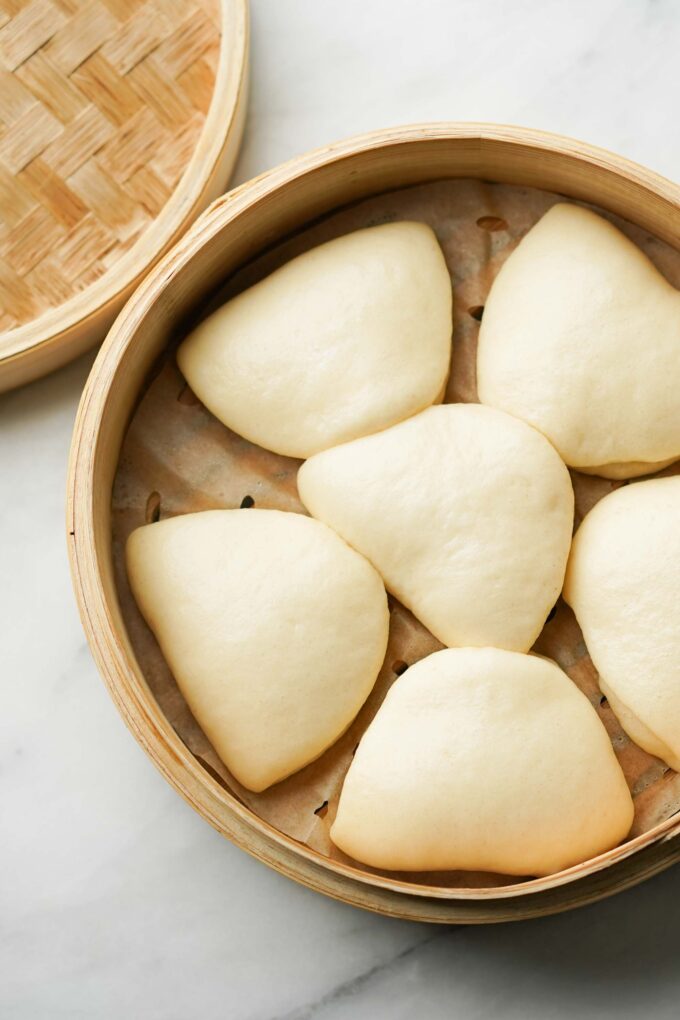For meats roasted on spits over an open fire or a huge wood burning rotisserie oven, see siu mei. Shrimp shaomais by Stewart at Din Tai Fung in Taipei. In Cantonese cuisine, it is usually served as a dim sum snack. Hohhot shaomai is char siu bao regional variety in Hohhot, Inner Mongolia.
The wrapping is a very thin, round sheet of unleavened dough, with a pleat border. There is only one kind of filling, which mainly consists of chopped or minced mutton, scallion and ginger. Hohhot shaomai features this extensive use of scallion and ginger, creating a dense combined scent, and a slightly spicy taste. The filling is put in the center of the wrapping and the border of the wrapping is loosely gathered above, forming a “neck” and a flower shaped top. This is the most well-known variety outside of Asia and is from the southern provinces of Guangdong and Guangxi.
As prepared in Cantonese cuisine, siumaai is also referred to as “pork and mushroom dumpling”. A fish paste variety of siumaai is sold as a popular street food in Hong Kong, usually alongside curry fishballs. The Hong Kong Siumaipedia was written to document the Cantonese variety. Called the chrysanthemum shaomai, this variety is made in Changsha, Hunan province. This shaomai is named for its opening resembling the chrysanthemum flower petal shape. It is spicy with pepper and the wrapper is translucent.

The Shanghai variation also contains shiitake mushrooms and onion. The mince, mushrooms and onion are stir-fried before being prepared as the filling. In northwest China, the Uyghur people of Xinjiang adapted shaomai into two regional varieties. The southern Xinjiang recipes differ slightly from the northern version in terms of ingredients and method. Called the Yifeng shaomai in the southeastern Jiangxi province, this version’s distinct flavour comes from a blend of pork mince, bread flour, sesame seed powder, ground pepper and sugar. Shūmai in Japan usually use pork and minced onion as the main ingredients and are usually topped with a green pea. Compared to Chinese shaomai in which the meat filling is usually minced, the meat in Japanese shumai is ground to a paste.
Indonesia is pronounced the same way as its sisters and is usually a wonton wrapper, stuffed with filling and steamed. Philippines is often ground pork, beef, shrimp, and the like. It is combined with extenders like garlic, green peas, carrots and among others which is then wrapped in wonton wrappers. It is commonly steamed, with a popular variant being fried and resulting in a crisp exterior. A recent variant on siomai is wrapped in sheets of laver after the wonton wrappers, which are marketed as “Japanese”. Xíu mại in Vietnam has minced pork, onion, scallion and shredded bread as the main ingredients and is cooked in tomato sauce. It is usually served in a roll of bánh mì for breakfast.
